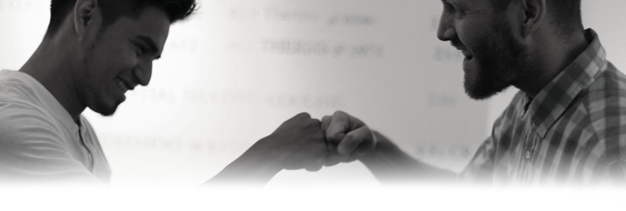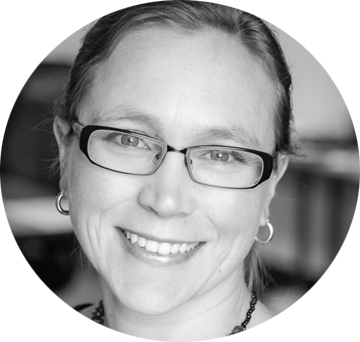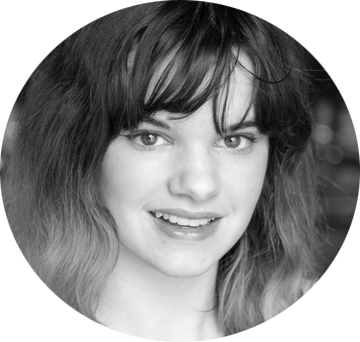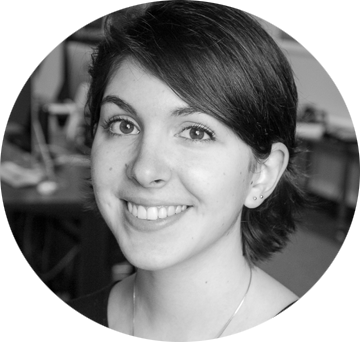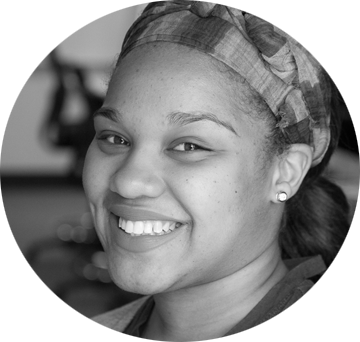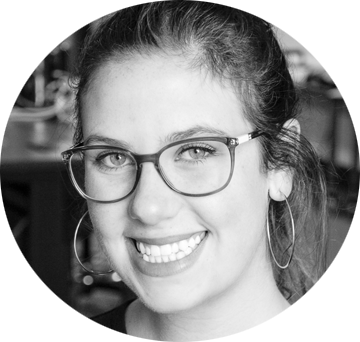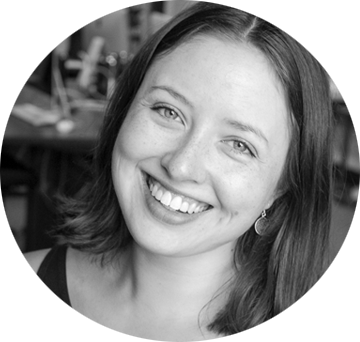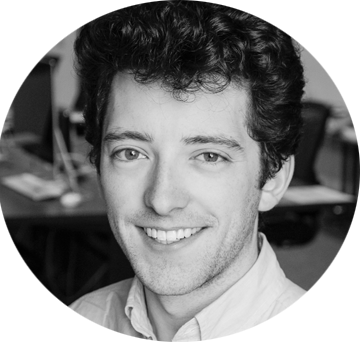2016 Storytellers' Institute Skidmore Scholars
FACULTY SCHOLARS
Rik Scarce is the author of Creating Sustainable Communities: Lessons from the Hudson River Region (2015) and the filmmaker of the parallel documentary Sustaining This Place: Creating a New Hudson River Region Landscape (2015). In the book and film, Scarce examines what he calls the extraordinary “entrepreneurship” of Hudson region sustainability advocates from all walks of life. Through 62 interviews with farmers, land-use advocates, elected officials, business owners, environmental justice activists, ecologists, historians and others, he insists that no similarly-sized area of the U.S. can match the Hudson region for the extent and vibrancy of its sustainability activity, and that it can inspire similar community building and ecologically nurturing practices from coast to coast.
In addition to his new book and film, Scarce has authored three books, Eco-Warriors: Understanding the Radical Environmental Movement (1990, revised 2006), Contempt of Court: One Scholar’s Battle for Free Speech from Behind Bars (2003) and Fishy Business: Salmon, Biology, and the Social Construction of Nature (2000). His other scholarly works include articles and book chapters on the social construction of nature in the law, research ethics and public participation in regulatory proceedings. Currently he is filming a documentary tentatively titled Impact: The Rise, Fall, and Rebirth of the Barefoot Running Movement.
Scarce earned his Ph.D. in sociology from Washington State University (1995). He has an M.A. from the University of Hawaii (1984) and a B.A. from Stetson University (1981), both in political science. Scarce joined the Skidmore College faculty in 2003, and in 2015 he was promoted to full professor. His specialty courses at Skidmore include environmental sociology, video ethnography, contemporary social theory and political sociology.
Project description
Baring It All explores the essential component of the emerging second running revolution and what it portends for runners and running. That component? Shoes—or the lack thereof. In his 2009 book Born to Run, Christopher McDougall argued that the primary reason why upwards of 80 percent of runners are injured each year is because of the thing those runners have been told will prevent injuries: the cushioned, motion-controlling, stabilizing, pseudo-medical devices they strap onto their feet. And the solution he advocated was to get rid of shoes as we know them—perhaps even getting rid of shoes altogether, running barefooted as most humans did until recent millennia.
Scarce's film traces the swift contradictory reactions to McDougall’s book. Researchers published opposing scholarship on topics such as gait, impact forces, running form and their relation to different shoes and being shod at all. Manufacturers leapt to create “minimalist” shoes—moccasins of high-tech fabrics—while some quietly altered best-selling designs, and others resisted changing anything. Some runners jumped onto the bandwagon but promptly hobbled off with injuries medical professionals had seldom seen before, and others found themselves running injury-free and “more naturally,” while the vast majority scoffed at the faddists.
What was fact and what was fiction? It’s just running. But running is never just running. It is technology, peer pressure, medical science—even anxiety about stepping on spit or hypodermic needles. Running is joy, pain, agony. And it is conflict.
Erika Schielke is a biologist with a passion for communicating science to the general public. As an aquatic ecologist, she often found herself engaged in impromptu lakeside conversations about her field research. This fostered her desire to do more public outreach, and in 2009 she was selected as an American Academy for the Advancement of Science Mass media fellow. She spent the summer working as a science reporter at KUNC in Greeley, Colorado, where she covered topics ranging from genetic testing to wildlife conservation. From 2009 to 2010 she produced The Adirondack Science Report at WGFR, a monthly radio feature highlighting regional science stories. Erika received her A.B. in molecular biology from Princeton University and her Ph.D. in ecology and evolutionary biology from Yale University. She is currently an instructor in the Biology Department at Skidmore, where she primarily teaches introductory biology labs and a non-majors course on the ecology of the Adirondack Park. During the Storytellers' Institute she will be working on a series of podcasts about regional environmental issues.
Project description
Academic science writing is detailed and dense, and sometimes (event to a scientist) dry. Yet current research is delving into the mysteries of the genome, trying to predict the impacts of climate change, and helping us understand the consequences of pollution. Science can help explain the world around us and develop solutions to our most daunting problems.
Science Shorts (working title) will be a series of podcasts (four, 4-minute features) on regional environmental topics. The format of these stories will be similar to NPR features combining narration, interviews with experts, and natural sound, while presenting science in a compelling and accessible way to the general public. The stories will draw on research from her course "Ecology of the Adirondacks," and will be a natural outgrowth of her work in regional environmental challenges.
STUDENT SCHOLARS
Colleen Craven '17 is a rising senior at Skidmore, majoring in studio art with a concentration in communications design as well as minoring in arts administration. After taking a class in animation early this fall, Craven gained a love of telling stories through the creation of animation and illustration. She has spent the last semester studying illustration in Florence, Italy, and is excited to be the back in the U.S. to use her new illustration and animation skills to create a interactive documentary with MDOCS' Storytellers' Institute this summer.
Project description
Craven is exploring where fact and fiction meet in the psychology of mind-altering drugs. She will look into how these chemical compounds can create an entirely different reality that while it might be considered hallucinating, is the reality of the person whose mind has been temporarily altered.
This multimedia documentary project will combine research a variety of mind-altering drugs known to have hallucinogenic effects (e.g., LSD, marijuana and psychoactive mushrooms) with stories of drug-induced experiences of the past and present told visually with animations and illustrations.
The end goal is to create an interactive website split emphasizing the factual and imaginative divide of psychology between the right and the left parts of the brain that we often identify ourselves with by putting the scientific information in the left part and the stories on the right. The viewer will be immersed in both a scientific educational experience of chemistry and psychology but also be introduced to the weird worlds that mind-altering drugs create.
Jennifer Davies ’17 is a rising senior at Skidmore , majoring in studio art with a concentration in photography and communications design as well as minoring in media and film studies. After finding a passion for photography in high school, she has since started to develop a great interest in film and other documentary mediums. She has felt inspired by her studies in documentary and film courses at Skidmore and after working closely with a local media production company in her hometown of Newtown, Connecticut, last summer, she is excited to be creating her own documentary film through the Storytellers’ Institute this summer.
Project description
Twenty is a conflicting and uncertain age to be, a time of feeling grown-up and mature yet also young and clueless, nostalgic about saying goodbye to a stage in life yet also ready to move on. It encompasses the bittersweet duality of being both terrified of the future but also passionately excited for what’s to come. It’s an age when often the only thing you’re sure about is that you’re completely unsure how to feel.
English writer Evelyn Waugh wrote, “Sometimes, I feel the past and the future pressing so hard on either side that there’s no room for the present at all.” Twenty Years Young and Old reflects on students’ previous years leading up to age 20, what Davies refers to as her scariest, most uncertain, most emotional, and most exhilarating years thus far, and discusses the present pivotal moment, teetering on the edge of freedom and adulthood as the final year of college approaches.
This film aims to illuminate how it feels to be at this point in life and bring an understanding to how the age of 20 feels both so young and so old. Her conversations with students about their thoughts, opinions, emotions, hopes, worries, and experiences will ultimately tell the story of what it means to be 20.
Maryam Dewitt ’18 is a native Ohioan studying social work at Skidmore. Dewitt began storytelling in the eighth grade through her small collection of romance stories and an anniversary video that she produced for her aunt. After realizing how allured her friends where with her short stories and how much her aunt enjoyed her personalized video, Dewitt became addicted to storytelling. It was not until her freshman year of undergraduate school that people started to take notice of her creative and unique approach of storytelling. During her freshman year she accomplished co-directing a fashion show, where the stories of those of African and Caribbean descent where told through clothing and sound. Also, her freshman year was the first time she picked up a camera and learned the significant difference between B-roll and direct interview.
Dewitt had the opportunity to work alongside five of her peers and work on a documentary about the Higher Education Opportunity Program, where she served as one of the project editors. She has directed and filmed her own 6-minute documentary, The Miseducation of Black Women, that she plans to continue production on. She is also in production on a film called Mama, dedicated to her mother. Her most recent works include filming a commercial for an up-and-coming fashion brand.
She would like all of her supporters to understand that everything that she produces does not end, it only takes a pause. and she wishes to capture the stories of those around her as best as she can.
Project description
Dewitt lost her mother to a heart attack five years ago in November 2011. Her family still mourns the loss of her mother, her contagious smile and the way her affectionate voice could dance along the walls and fill every room. Her documentary film tells the story of who her mother was through the voices of family members and archival home videos.
The lines between fact and fiction become blurred as more time passes and these memories of her mother begin to fade. The goal of this documentary film is to restore and preserve the memories of her mother and to create something that the family can watch to honor the impact she had on all of their lives.
Emma Foley ’16 graduates from Skidmore this May with a B.A. in anthropology; she was also involved in the growing MDOCS program. She has done work for Witness, a Brooklyn-based nonprofit focused on human rights and video advocacy. While her background is in film photography, she has recently delved into filmmaking, completing a short documentary on the myths of American college culture.
Project description
While the feminist movement gains steam and the spaces where women’s voices are heard and valued continue to expand, the societal standards for female virginity persists. This results in a majority of young women feeling overwhelmed with confusion and shame surrounding their first sexual experience. After hearing anecdotes from individuals who were generous enough to share, Foley noticed the common threads of sex without love, love without sex, same-sex experiences, and sexual assault—none of which fit into the traditional narrative of how to properly “lose one’s virginity.”
In an effort to help young women feel less excluded, Foley has collected stories from a series of individuals who felt as though their “first time” didn’t quite fit. She has separated each experience into a visual chapter and balanced anonymous audio recordings with non-narrative, somewhat abstract footage to create a series of short experimental films. Each chapter leaves space for the viewer to draw their own conclusions, placing Foley’s project in the interpretive realm that exists between fact and fiction.
Eleanor Green ’18 is a rising junior majoring in studio art and minoring in media and film studies. She discovered a love of documentary film when she realized it combined her interest in psychology with her love of photography. In 2013 she bought her first Nikon DSLR on a whim and became her high school’s yearbook photographer. She later found the darkroom and tried every form of analog still photography from disposable 35mm to medium format. Green plans to shoot on 16mm for the first time as part of her project for the Institute.
Project description
Max tells the story of a young doctor in the 1920s consumed by compulsive gambling and a crippling depression that ultimately claimed his life in a murder-suicide that made New York Times headlines. Maxwell B. Allen was Green’s paternal great-great uncle, who continues to be part of her family conversation today. He is rumored to have several illegitimate children, one of whom traced her heritage back to Green’s family and revealed herself as their kin this past year. This film will examine mental illness and gambling through Max’s story, mixing archival material with both 16mm and digital footage.
Emma Lanier ’16 is a dance artist from San Francisco whose choreographic drive led her to audio and video documentary. A graduate of the Ruth Asawa School of the Arts, she trained at ODC, studied dance and anthropology at Skidmore and spent a year at the Conservatorio Superior de Danza María de Ávila in Madrid. There she performed and did videography for a small company, making a trailer that qualified them for the 2015 Singapore Fringe Festival. She is one of Roundantennae’s 2016 emerging artists at their Other Views 2 choreographic workshop in SF and a Margaret Paulding Award recipient.
Project description
Lanier’s film Echando un vistazo a María Manuela goes inside the studio and onto the streets of Madrid with young choreographer José Maldonado and his all-female ensemble to see how he uses flamenco dance to embody, expose, and revoke gender inequality in Spain.
The film explores how an early 20th century poem’s potent language and the machista attitude it connotes inspired Maldonado to make a piece. He sourced the movement from the poem and set it to an original audio score featuring a reading of the text, collected sounds, and the traditional flamenco cajón. Maldonado contrasts the antiquated refrain with 21st-century contemporary flamenco choreography that breaks ground in drawing from both masculine and feminine steps instead of adhering to traditional gender-specific movement norms. He uses irony and juxtaposition to illustrate the problematic paradigms the poem connotes and questions whether or not they are still alive. By placing audio and images rooted in two disparate times in conversation with one another, he makes the poem relevant again, showing that despite how far the woman in Spain has come, attitudes have remained unchanged from the generation of his grandmother to the generation of the dancers performing his piece.
This project marries ethnographic inklings and artistic sensibilities, analytical skill and imaginative composition while revealing the rigorous rehearsal process and transmitting the performers’ voices and laughter.
Daniel Plumer ’16 graduates from Skidmore this May with a degree in American studies and a minor in Spanish. His academic interests include cities, the civil rights movement, cultural mythologies and historiography. In his spare time Plumer enjoys photography, jazz piano, singing and traveling. He studied abroad in Spain and recently participated in Skidmore’s "History Through Travel" seminar to Cuba.
Project description
In the fall of 2015 Plumer wrote a senior thesis in American studies on the ways the civil rights movement is taught in American high schools, and used the 1963 Birmingham, Alabama, Children’s Crusade protest as a case study in how educators and textbook authors might use intersectional thinking to create a more complex and nuanced narrative of the movement.
Plumer is currently developing a 20-minute audio documentary that will put into practice the type of history he advocates in the paper. The audio piece will explore the controversial nature of black leadership in Birmingham during the Children’s Crusade from the conflicting perspectives of Dr. Martin Luther King, Jr., local civil rights leader Fred Shuttlesworth and local businessman A.G. Gaston. Plumer is excited to work with Storytellers’ Institute fellows and faculty this summer to complete and polish this audio doc that will include the voices of civil rights historians, Children’s Crusade participants, archival audio and period music.
Project description
Uncovering Silence (working title) illustrates real students’ experiences in a dialogue class in intergroup relations, a minor at Skidmore that focuses on addressing racial tension. The dialogue course provides a safe space for students to personally reflect on issues of race such as white privilege and structural racism in the U.S. Sitting in a circle facing one another, five white students and five students of color learn to speak openly and respectfully with the guidance of student facilitators.
Through reenactments and interviews developed by the students of this course, the film will convey what it is like to partake in an IGR dialogue and what it’s like to grow with each other, learn more about themselves and their places in society and gain new perspectives through an emotionally and mentally challenging dialogue.

